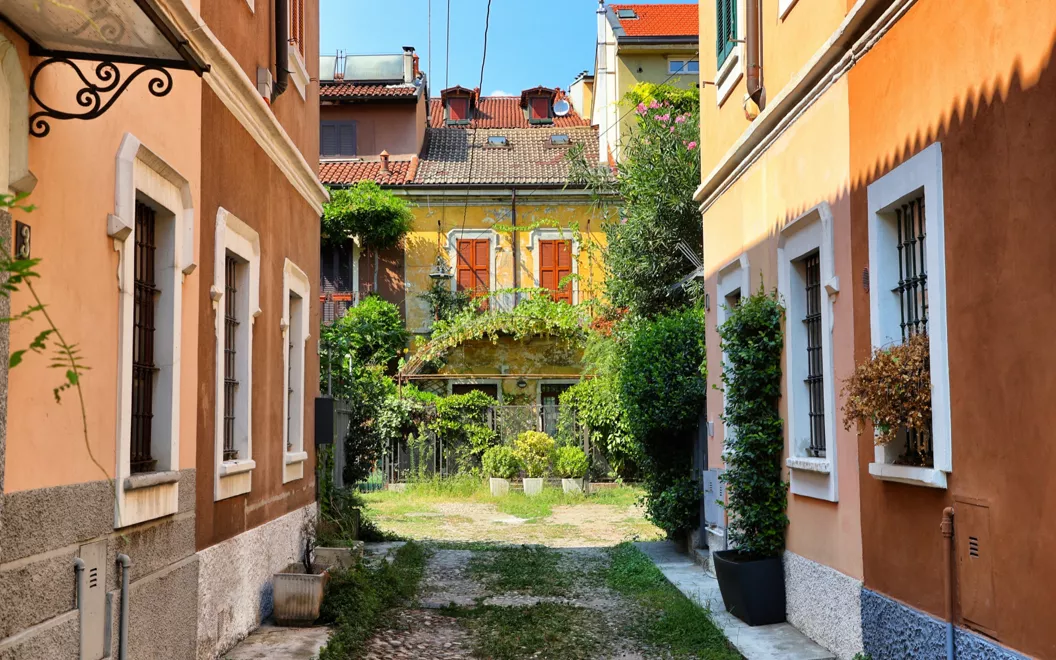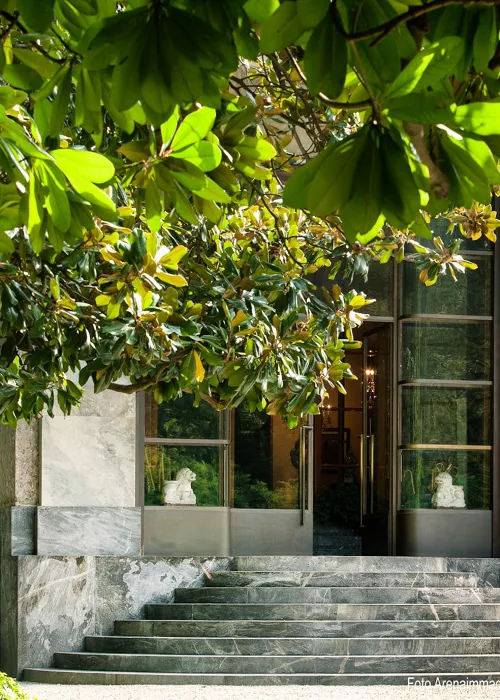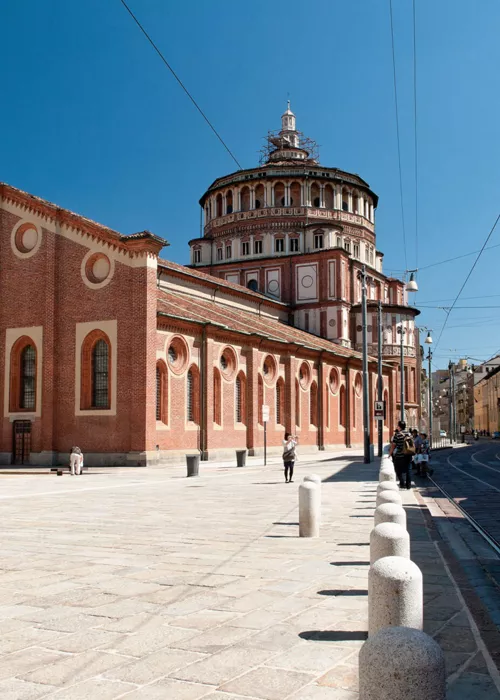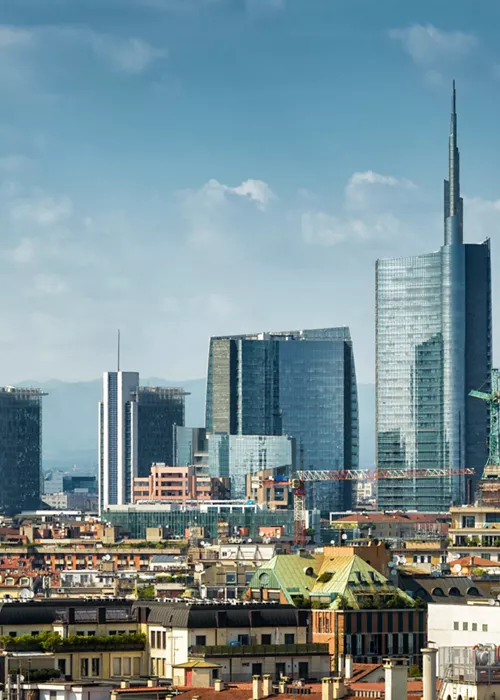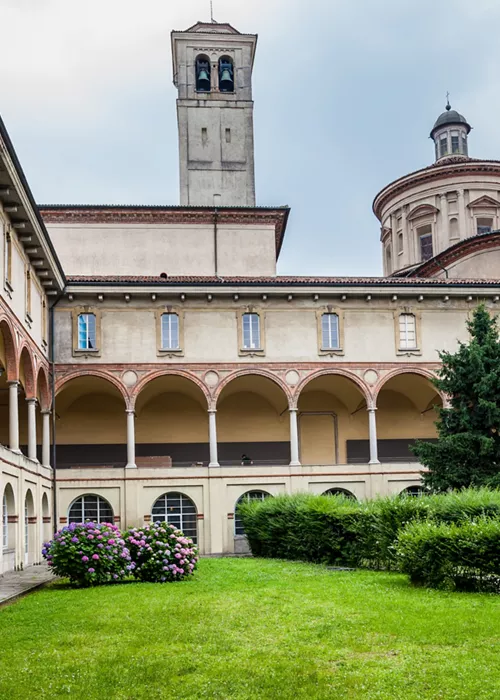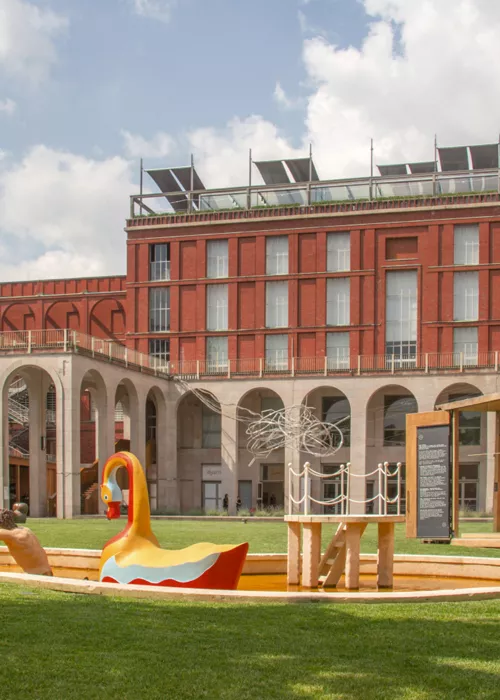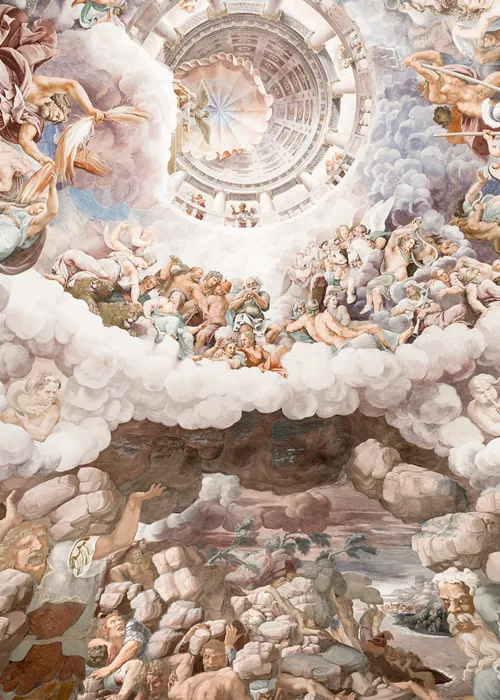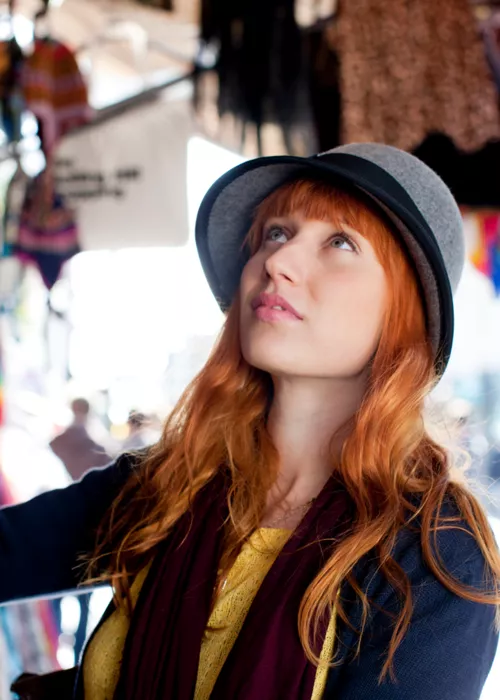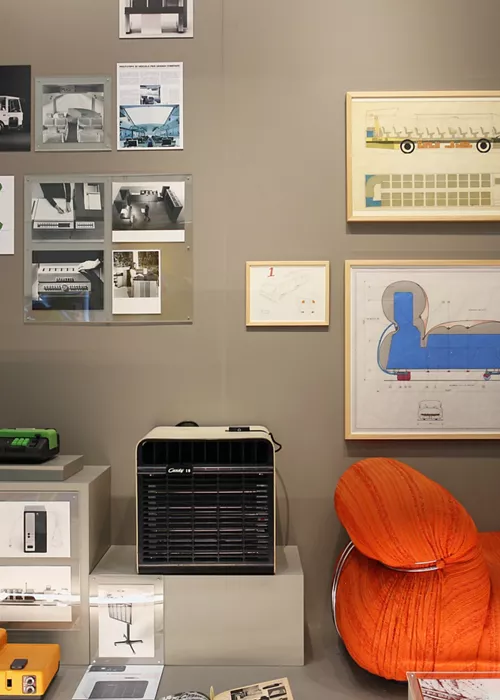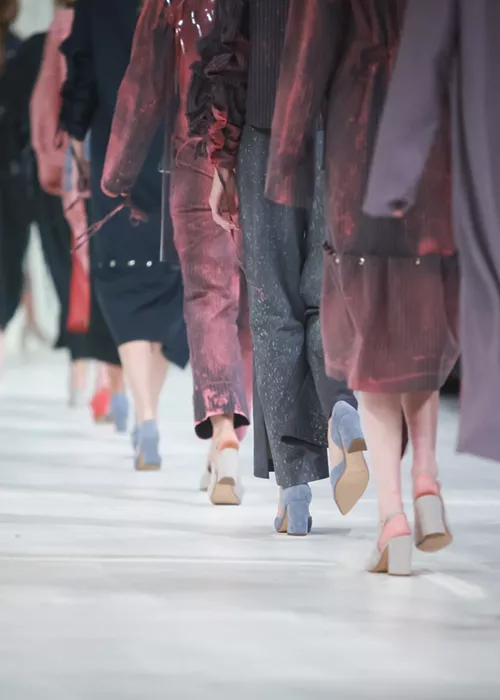13 hidden places that reveal the secret Milan
5 minutes
Index
Beyond the well-known and popular places, there is a secret Milan: it may lie behind the door of an aristocratic palace, in the most secluded streets, just outside the centre; or, right before our eyes, hidden in the shadow of the most famous monuments. Discovering it is really easy, following an itinerary through intriguing and mysterious places.
Villa Necchi Campiglio and Milan's first private swimming pool
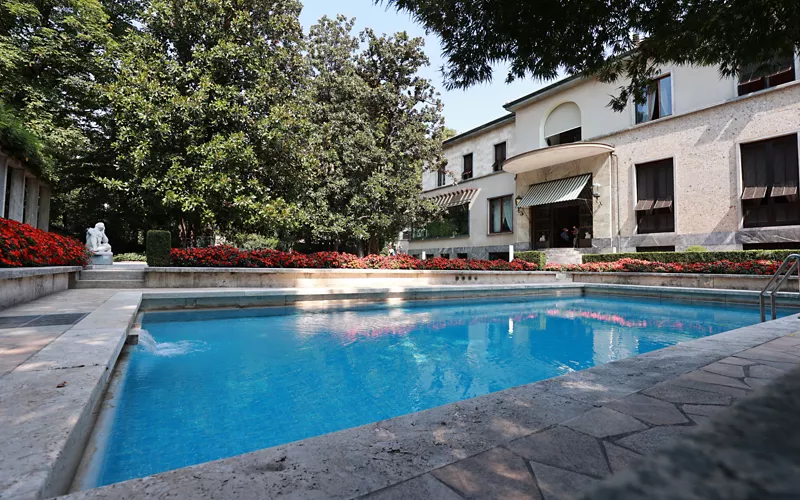
In Milan between the wars, nobles, aristocrats and the bourgeoisie used to meet to enjoy parties at the home of Nedda and Gigina Necchi and Angelo Campiglio: Villa Necchi Campiglio. Today it is one of the most beautiful house-museums of secret Milan, right in the heart of the Quadrilatero del Silenzio, near the Palestro (M1) metro station.
The villa, designed in the early 1930s by Pietro Portaluppi, was the first in the city to have its own private swimming pool, a symbol of a new way of spending leisure time.
Enjoying a coffee by the pool, just as the first guests did, inside the bistro, is an unmissable experience.
The "Ca' de l'Oreggia" listens to all the secrets
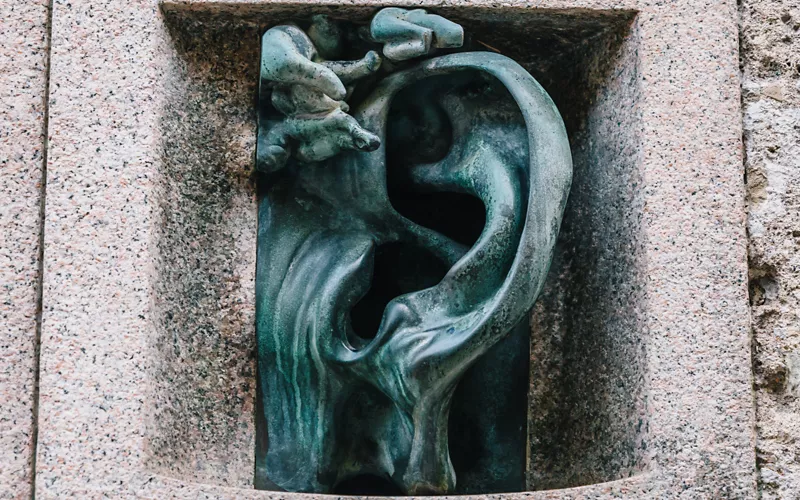
The saying goes that walls have ears: it really is the case in Milan. At Via Serbelloni 10, next to the main door of Palazzo Sola Busca, there is a beautiful ear sticking out of the wall; it's impossible not to notice it as you pass by. It is a bronze doorphone made by Adolfo Wildt in the 1930s. It’s one of the very first doorphones installed in Milan. and its unusual shape has given the building its nickname in Milanese dialect of 'Ca' de l'Oreggia' (House of the Ear’).
See the pink flamingos of Villa Invernizzi, for a photo to remember
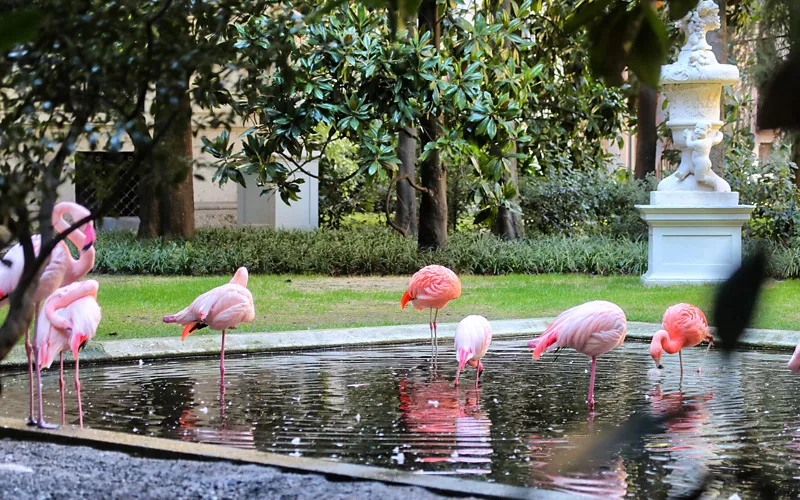
Remaining in the area, at Via Cappuccini 7, one often encounters a small group of people peeking through the hedges that conceal the façade of a villa. This is Villa Invernizzi: in the private garden, around a pond lives a colony of pink flamingos. It is a stop on the tour that allows a snapshot of a truly unusual Milan.
The Rabbi's House: unique in all of Europe
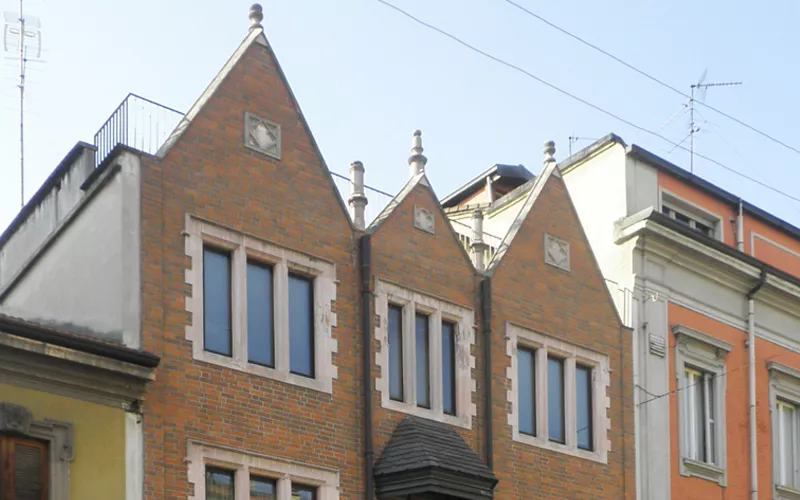
Some call it 'the Dutch' because of the style of its architecture, reminiscent of typical northern European architecture. In reality, the house at 35 Via Carlo Poerio is one of sixteen identical 770 houses built in different cities around the world by the Lubavitcher Orthodox Jewish community. The one in Milan is the only one of its kind in Europe: another reason to drop by and take a look at this marvel.
Via Lincoln, the Burano of Milan
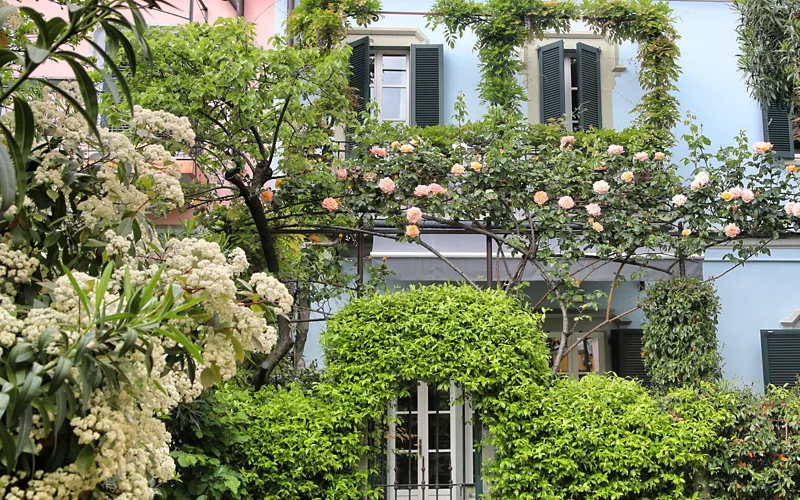
In little more than a kilometre you can travel from the Quartiere del Silenzio to the Quartiere Arcobaleno. Low terraced houses, with their little balconies, palm trees and private gardens: this is the spectacle before you, complete with brightly coloured façades. And this is Via Lincoln: a private street just a few metres long, so colourful that it is known as the 'Milanese Burano'. Take a stroll around the area, past bars and restaurants, to fully enjoy this unusual place.
Continuing along Corso XXII Marzo, towards the Suffragio market, you will pass the mural dedicated to Sant'Ambrogio the beekeeper. It is one of Milan's latest street art works, a tribute to the industriousness and resilience of its citizens.
The House of the Omenoni: Barbarians live 500 metres from the Duomo
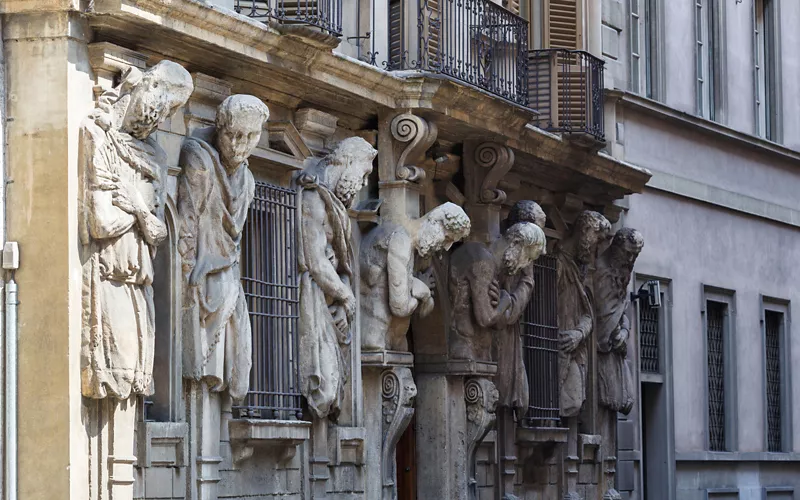
The imposing masculine sculptures representing the lineages of the defeated barbarians - Svevo, Quado, Adiabene, Parto, Sarmata and Marcomanno - can be admired on the front of a building at Via degli Omenoni 3. The sculptures are inspired by those of ancient Rome: for some, they resemble Michelangelo's 'Prigioni' and indeed Leone Leoni, the owner of the house, was the sculptor of the Milan Mint and a great art aficionado. Part of his collection, which also included Leonardo's Atlantic Codex, is now in the Pinacoteca Ambrosiana.
The Church of San Bernardino alle Ossa
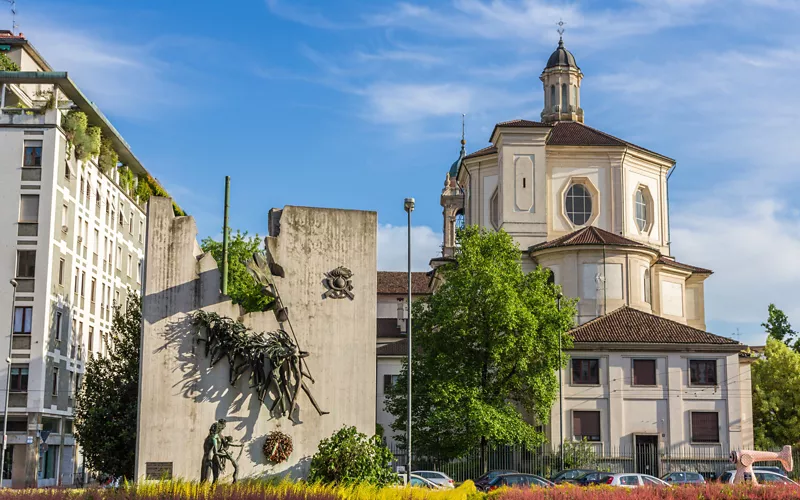
Walking down Via Larga, you reach Piazza Santo Stefano: be brave enough to cross the 'Stretta dei morti’ ('narrow street of the dead'), today known as Vicolo di San Bernardino. Passing through the main door of the church of San Bernardino alle Ossa (St Bernardino at the Bones), you go down into the Ossuary, where the small room in the half-light has walls, jambs and columns that are completely covered with skulls, vertebrae, femurs and ulnae.
The mysteries of Palazzo Acerbi: a demonic presence?
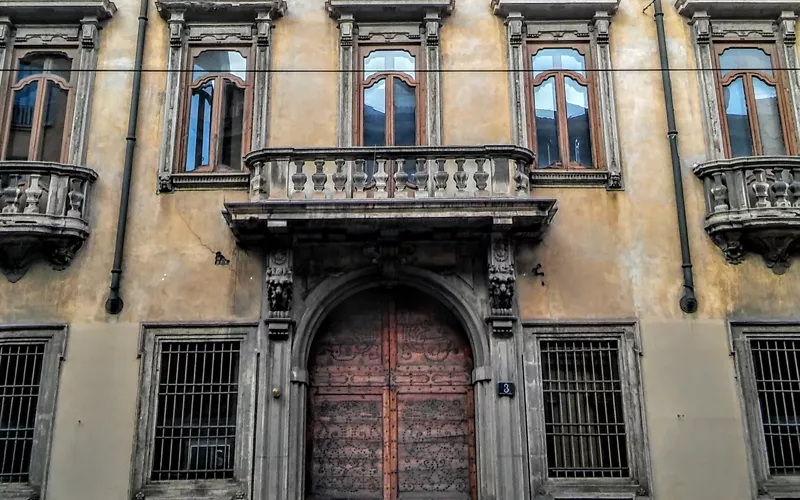
Leaving San Bernardino alle Ossa, knocking on the door of Palazzo Acerbi, Corso di Porta Romana 3 (M3 - Missori), perhaps one can still come across the devil. The chronicles of 1630 report that the devil himself, the aristocrat Ludovico Acerbi, used to live here. He usually travelled in a carriage drawn by black horses, and insisted on organising parties and balls, despite the plague that raged in Milan and seemed to affect everyone except him and his guests.
Among the oddities of Palazzo Acerbi is a cannonball set into the wall: it dates back to the battles of the Five Days of Milan, in 1848.
The Devil's Column
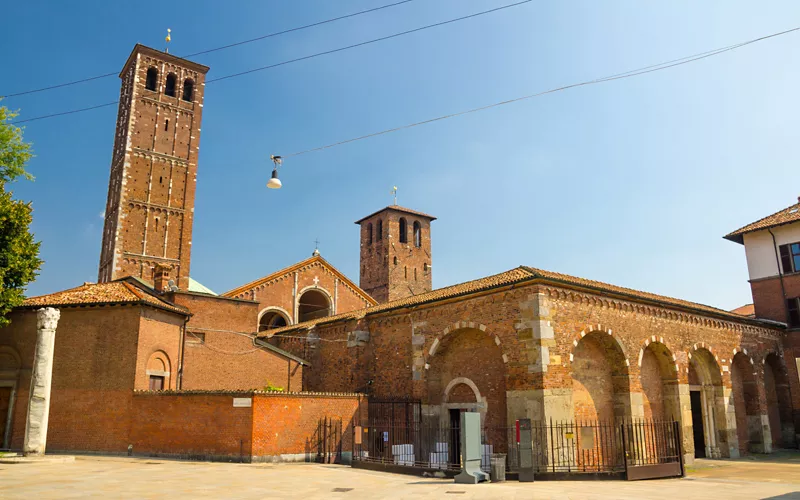
There is certainly another place in Milan where the devil has left his mark. Outside the Basilica of Sant'Ambrogio (M2 - Sant'Ambrogio), a severed stone column has two clearly visible holes. According to legend, they were caused by the horns of Lucifer, who was thrown to the ground in a struggle with Sant'Ambrogio. Some say that if you approach the holes, you can hear the call of Hell: a smell of sulphur and sinister noises.
Casa Rossi and the secret courtyard of Corso Magenta
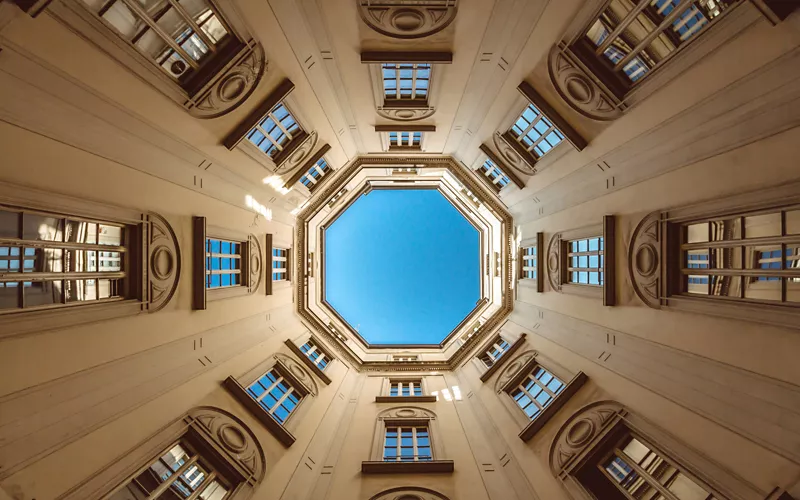
Walking up Piazza Sant'Ambrogio towards the Castello Sforzesco, in Corso Magenta you will find another intriguing place: its name is conventional, Casa Rossi, but entering the courtyard from number 12 you realise you are in a place that is anything but commonplace. For example, looking up from the centre of the internal courtyard, you can see that the five-storey architecture frames a section of sky in a perfect octagon. Just the right photo for a cute social media post. Then it is only a 10-minute walk to the Church of Santa Maria delle Grazie and the Cenacolo Vinciano: certainly not secret, but obligatory stops.
Leonardo's Vineyard? In the city centre!
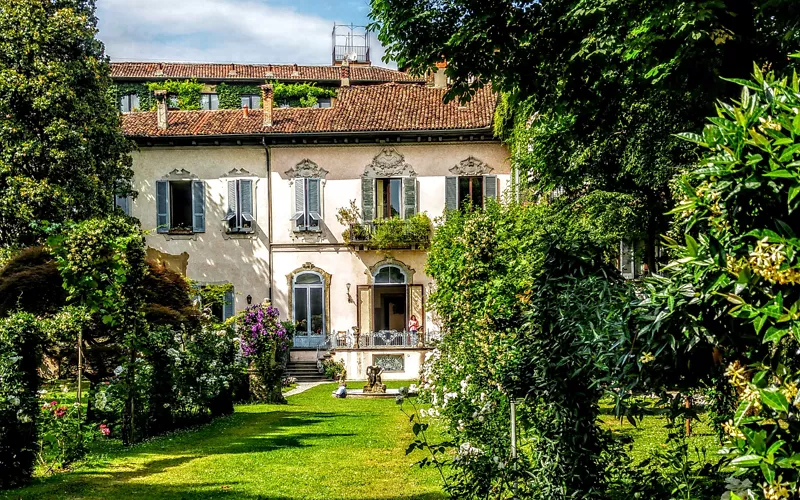
Just a few more steps and you come to another secret place: the Casa degli Atellani with Leonardo's Vineyard. Hidden behind the main door of the only Renaissance-style building in Corso Magenta, number 65, you discover a house-museum with a garden, which until a few years ago was one of Milan's best-kept secrets. Visiting the Zodiac room, Ettore Conti's studio, Portaluppi's monumental staircase and the room with Luini's portraits gives an insight into an exceptional period residence. From the windows one can catch a glimpse of the garden of delights, which contains the vineyard that Ludovico il Moro gave to Leonardo as a token of thanks for his years of work at the Duchy, and which was replanted on the occasion of Expo 2015.
Milan's igloos in the Maggiolina district
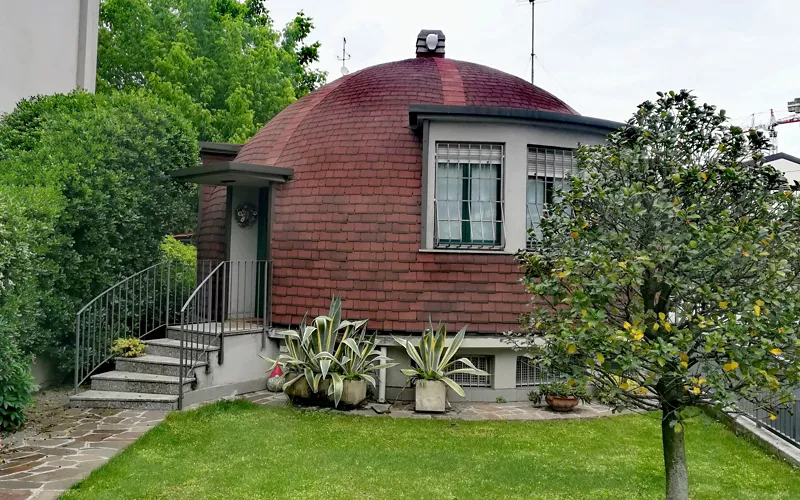
If you take the metro, you can reach the Maggiolina district (M5 Marche or Istria) where, in Via Lepanto, you will find Milan's most unusual residential experiments, the igloo houses designed by engineer Mario Cavallè. They were built after the war as temporary housing units to accommodate families evacuated after the bombings of World War II. Today, only two of the houses have retained their original structure, but they are a must-see for those on the hunt for the secret places of Milan.

